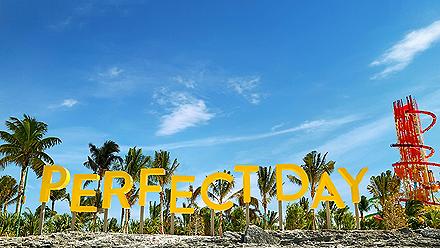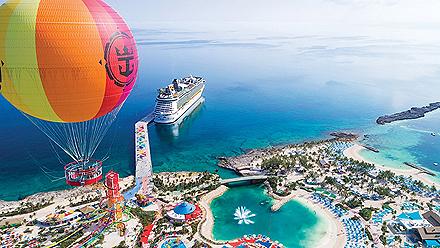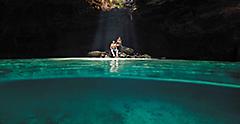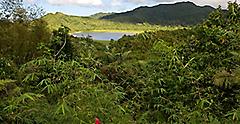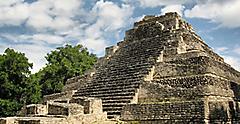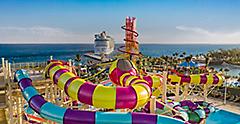Stepping Into the Lost City Of The Gods
Published on December 01, 2021
I knew Teotihuacan was a large site, but when I arrived, I found it's better described as "colossal." Often called "the Lost City of the Gods" — and home to the Pyramid of the Sun, the world's third-largest pyramid — the city is massive. Yet its impressive structures and expansive grounds are an enigma: No one knows who built this place, why they built it, or who called it home.
Archaeologists do know that building something this enormous required a Herculean effort, and the clues they've found point to a city that was built entirely by hand over a thousand years ago. Teotihuacan covers about eight square miles and is believed to have contained thousands of homes, dozens of pyramids and temples, and a massive central road now known as the Avenue of the Dead. The main buildings — the Temple of the Plumed Serpent, Temple of the Sun and the Temple of the Moon — are some of the biggest on earth.
I read that the first to discover this epic site were the Aztecs, who arrived in the area 700 years ago and were shocked to find it abandoned. Since they didn't know about the origins and believed such a city could only be made by gods, they named it Teotihuacan, "the place where the gods were created." To this day, there's little known of the city's history, culture, and origin. No one knows exactly who lived there and how they built and maintained such a detailed grid layout of plazas, temples, palaces and residences. It makes for an intriguing present-day mystery in a world where so many of our questions about history have been answered.

Descending Like The Aztecs
As I stumbled my way inside the ancient site, I felt both excited and a little nervous to be face-to-face with one of the world's great, puzzling mysteries. I imagined myself as one of the Aztecs who first laid eyes on the lost city of the gods. I wanted to solve this mystery, too. What a marvelous feeling it must have been to find such a place with its architectural beauty, yet how disappointing to then realize it was a ghost town.
I saw the grand avenue that leads to the Pyramid of the Sun and thought of the people who may have called this place home. What happened here? How could they all disappear and leave no trace but this otherworldly city? The Aztecs probably asked the same questions, I told myself. As I heard the voices of the people on my tour, I was transported back into this century — but there's something about the city that makes time seem to disappear. It's easy to get caught up in its magic and feel like one of the Aztecs arriving for the first time.

Looking For Clues
We walk to the south area by the Temple of the Moon, where the main excavations by archaeologists like local Rubén Cabrera were performed. Our guide, Andres, explains that beneath layers of debris, researchers found artifacts with details of craftsmanship that point to a mix of influences. They also found murals with images of what was later posited to be the Great Goddess of Teotihuacan, who appears as a human-like spider.
They discovered other deities, too. Quetzalcoatl, the god of vegetation, is a god seen in subsequent civilizations, and Tlaloc, the god of rain, was also found. An image of Xipe Totec, the god of spring, exhibited a boxy style that is particular to Teotihuacan. The art found in Teotihuacan also shows ornate images of ceremonies and a tendency to use rectangular forms to depict supernatural events. Examining the style that the Teotihuacan people used to create their art made me feel closer to them.

Questions Abound
There's no timeline when it comes to Teotihuacan — no one knows how it came to be. But Andres told us that the city might have been founded as early as 400 B.C and that experts believe the population was close to 200,000 people. I suddenly imagined the site filled with Teotihuacan residents, some walking up the steep steps that lead to the top of a pyramid, others walking around the plaza or to their homes. It must have been a busy and lively city.
What did they wear? What gods did they believe in? I asked my guide if any symbols were found. He said there were several. It turns out that this city shows influences from the Maya, Mixtec and Zapotec. "Some believe the city was built by migrants," said the guide. But where did they come from? And why build here?

A Walk In The Clouds
We walk to the Pyramid of the Sun and hike up the 248 stairs that lead to the top. I take a moment to admire the impressive view of the vast valley and think of the tunnels, murals and god offerings that lie below us, all part of the Teotihuacan way of life.
The guide said the pyramid we were standing on is believed to represent the dry season while the Pyramid of the Moon, which I could see from where I stood, represents the wet season. These are the suppositions that experts can only hypothesize based on iconography and architecture, because no writings were ever found. Unlike the Maya, Teotihuacanos had no form of written language and most of their religion, politics and culture were lost after their society collapsed.
As I pondered the puzzle at the summit of the pyramid, I felt like I stood among the clouds.

Decoding The Mystery
I asked my guide if Teotihuacan had any influence on other civilizations and he said that many artifacts found in the old city were also found across Mexico, suggesting that Teotihuacan was once a wealthy trade metropolis. They apparently exported tools like spears and darts, ceramics like pottery and goods like cacao, shells and feathers. Their architecture style was copied across Mesoamerica, and that style includes single-story homes, flat roofs and florid rectangular panels that were used as support walls. All this suggests a group of people with great influence, but my guide, as well as researchers, are unable to figure out more about the population that actually built the site because of Teotihuacan's collapse and the lack of information left behind.
Book Now

Leaving Teotihuacan
Local researchers haven't given up hope and I haven't, either. Our guide told us that in 2003, a heavy rainstorm exposed a sinkhole at the base of the Temple of Quetzalcoatl. Inside, researchers found more than 75,000 artifacts of different styles, including pottery, human skin, animal bones and more. A chamber filled with jewelry and ritual relics was also uncovered. Some believe this finding gives clues about the vast diversity of the population in Teotihuacan, but it also makes it harder to pinpoint who actually built the place.
I left Teotihuacan having learned so much more about its history, but it seemed like the more I learned about it, the less I understood. We walked down the Avenue of the Dead as we left and I turned around one more time to say goodbye to Teotihuacan. As I did so, a gentle breeze swept up some dirt and dropped it on my shoes. I was struck by the thought that the same dust that lay at my feet could hold the truth about the city somewhere beneath its surface.
For now, the mystery of Teotihuacan lives on. Perhaps if you visit, you'll find a crucial clue that could reveal the secrets of this ancient city.

